by Ravindra Warang
9 minutes
Enhancing Safety In Pharma Manufacturing: Smart Innovations, Process Safety And Compliance In 2025
An exploration of practices and technologies for enhancing worker safety and process safety in pharmaceutical manufacturing.

Safety in pharmaceutical manufacturing is a critical component that ensures the well-being of workers, the integrity of processes, and the quality of products. As the pharmaceutical industry continues to advance, the complexity of manufacturing processes increases, necessitating stringent safety measures. These measures are not only regulatory requirements but also fundamental principles that protect public health and maintain the industry's reputation.
Safety Of The Workers: A Top Priority
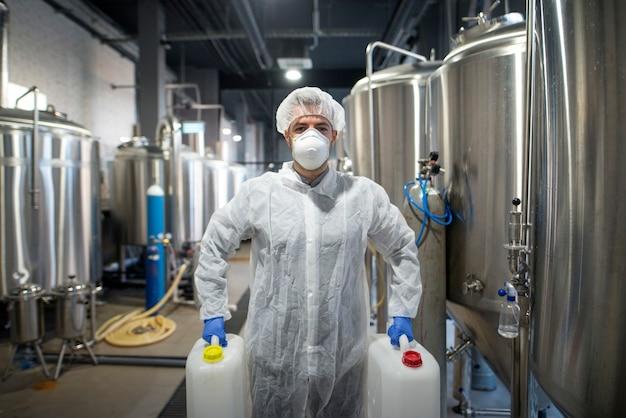
Worker safety is at the forefront of safety considerations in pharmaceutical manufacturing. Employees often work with hazardous chemicals, biological agents, and complex machinery, which pose significant risks if not managed properly. To mitigate these risks, pharmaceutical companies must implement robust safety training programs that educate workers on safe handling practices and emergency procedures. Providing personal protective equipment (PPE) and enforcing its use is essential to minimize exposure to harmful substances.
Moreover, regular safety audits and continuous monitoring are vital to identifying potential hazards in the workplace. Companies should foster a culture of safety where employees feel empowered to report unsafe conditions without fear of reprisal. By prioritizing worker safety, pharmaceutical manufacturers can reduce the incidence of workplace injuries and ensure a healthy, productive workforce.
Process safety: Ensuring Integrity and Continuity
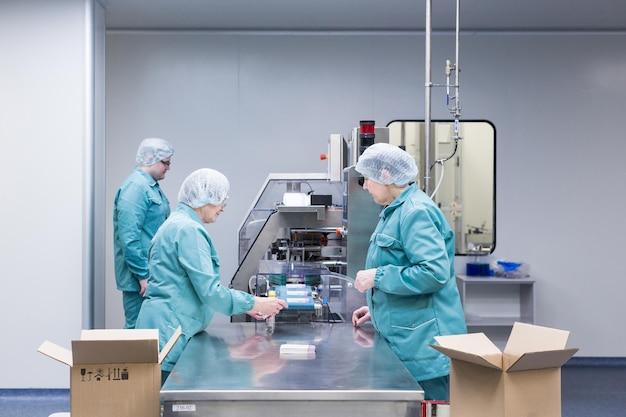
Process safety focuses on preventing incidents that could disrupt manufacturing operations and compromise product safety. This involves identifying and controlling process hazards through meticulous design and operational practices. Implementing advanced risk assessment techniques, such as Hazard and Operability Studies (HAZOP) and Failure Mode and Effects Analysis (FMEA), helps in anticipating potential issues and developing mitigation strategies.
Safety instrumented systems (SIS) are another crucial element of process safety. These automated systems monitor critical process parameters and take corrective actions if unsafe conditions are detected. For example, an SIS can shut down a reactor if it detects a temperature or pressure that exceeds safe limits, preventing potential explosions or chemical spills.
Innovative Safety technologies: The Future of Safety Management
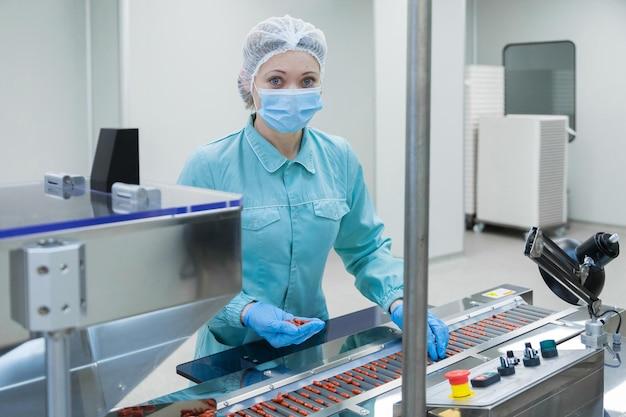
Pharmaceutical manufacturing has become much safer thanks to new technologies. Tools like real-time monitoring, automation, and data analysis now help companies keep a close watch on safety at every step of the process. Automated systems can track things like room temperature, equipment health, and production settings around the clock. If something unusual happens, these systems can send alerts or even shut things down automatically to prevent accidents.
Robots and remote monitoring also play a big role in improving safety. Robots can handle dangerous tasks like working with toxic chemicals or operating machines in risky areas. This keeps workers safe and operations running smoothly. Another important tool is predictive analytics. By studying huge amounts of data, it can spot warning signs of future problems. This helps companies fix issues early—before they turn into serious safety incidents.
The Role of Pharma Now in Promoting Safety
Staying informed about the latest developments in safety in pharmaceutical manufacturing is essential for industry professionals. Pharma Now, a leading digital magazine, provides comprehensive coverage of the pharmaceutical industry, including cutting-edge safety technologies and practices. With expert insights and the latest industry news, Pharma Now is an invaluable resource for those committed to enhancing safety in pharmaceutical manufacturing.
Safety in pharmaceutical manufacturing is a multifaceted challenge that requires a comprehensive and proactive approach. Pharmaceutical companies can safeguard their operations and deliver high-quality, safe products by prioritizing worker safety, ensuring process integrity, and leveraging innovative safety technologies. The commitment to safety protects employees and consumers and reinforces the industry's dedication to public health.
What Is the Role of Worker safety in pharmaceutical Manufacturing in Ensuring a Safe and Productive Environment?
In the pharmaceutical industry, safety is a top priority, encompassing everything from the safety of the end products to the workforce's well-being. Worker safety is a critical element that directly influences manufacturing environments' overall safety and productivity. By prioritizing worker safety, pharmaceutical companies can create a safe and efficient production atmosphere, leading to better employee and consumer outcomes.
Ensuring a Secure Manufacturing Environment: The Fundamental Role of Worker safety
a) Worker safety in pharmaceutical manufacturing:
Worker safety in pharmaceutical manufacturing is vital because the job often involves handling hazardous materials, operating complex machines, and working in controlled environments. Keeping employees safe isn’t just the right thing to do, it’s also a legal requirement. Proper training is one of the best ways to ensure safety.
Workers must know how to handle risks, respond to emergencies, and use protective gear correctly. Regular training keeps everyone prepared. Equally important is building a strong safety culture. When employees feel safe reporting issues, it helps prevent accidents. Routine safety checks also help catch problems early, before they become serious.
b) Process safety: A Crucial Element in Safeguarding Workers
Process safety is a key part of keeping pharmaceutical manufacturing safe. It focuses on spotting and managing risks in the production process to prevent accidents that could harm workers or disrupt operations. Methods like HAZOP and FMEA help identify potential hazards and plan safety measures in advance. In addition, Safety Instrumented Systems (SIS) monitor critical process conditions and automatically take action if something goes wrong—helping prevent serious incidents like chemical spills or explosions.
c) Advancing Worker safety Through Innovative Safety technologies
New safety technologies have made pharmaceutical manufacturing much safer for workers. Real-time monitoring systems keep constant track of conditions, machines, and processes. If something goes wrong, the system can send alerts or automatically shut things down to prevent accidents. Robotics and remote monitoring also help by keeping people away from dangerous tasks. Robots can handle hazardous materials or work in risky areas, reducing the chances of injury and human error.
Safety innovation: The Future of Worker safety
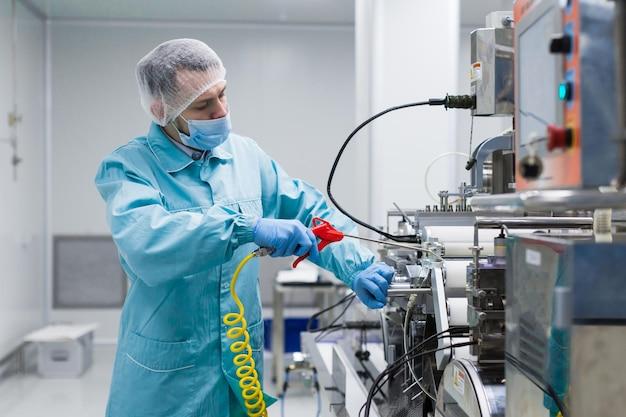
The pharmaceutical industry is continuously evolving, with safety innovations playing a key role in that progress. One major advancement is the use of predictive analytics, which relies on big data and machine learning to identify patterns and predict potential safety risks. This allows companies to take preventive action before problems occur. Another important development is the adoption of green chemistry, which focuses on creating safer chemical processes. This reduces the risks associated with manufacturing while also supporting more sustainable and eco-friendly practices.
Worker safety remains a foundation of safe and efficient pharmaceutical manufacturing. By offering thorough safety training, promoting a culture where safety is a shared responsibility, and using the latest technologies, companies can protect their workforce and maintain high production standards. A strong commitment to safety not only improves productivity but also reinforces the industry’s responsibility to deliver safe, effective medicines to patients. For ongoing updates and expert perspectives on safety in the pharmaceutical sector, industry professionals should turn to Pharma Now, a trusted source for the latest information and innovations.
How does process safety in the pharmaceutical industry ensure product quality and prevent accidents?
In pharmaceutical manufacturing, safety is just as critical as innovation. Given the strict regulations and complex processes involved, it’s essential to ensure that medicines are produced safely and effectively. This is where process safety plays a vital role. Process safety focuses on preventing major incidents such as fires, chemical leaks, or explosions.
Unlike general workplace safety, which deals with protective gear and injury prevention, process safety is about how facilities are designed, how equipment operates, and how chemicals are managed. It involves identifying potential risks early and putting the right controls in place. By doing so, process safety protects workers, safeguards equipment, and helps ensure that the final products are both high-quality and safe for patients.
Ensuring Product Quality:
a) Consistency in Manufacturing: A key aspect of process safety is maintaining stringent control over production processes. By doing so, pharmaceutical companies ensure that each batch of product meets specified quality standards. This consistency is crucial for medications, where even minor deviations can impact efficacy and safety.
b) Preventing Contamination: Effective process safety measures include the design of facilities and processes to prevent contamination. This is vital in pharmaceuticals, where contamination can lead to product recalls, regulatory action, and harm to patients. Cleanroom technologies, proper material handling, and rigorous cleaning protocols are part of process safety strategies to maintain product purity.
c) Robust Validation Processes: Process safety involves validating that manufacturing processes are capable of consistently producing quality products. This validation process includes extensive testing and documentation to ensure that all aspects of production adhere to predefined criteria, reducing the risk of defective products reaching the market.
Preventing Accidents:
a) Hazard Analysis & Risk Assessment: One of the primary tools in process safety is conducting thorough hazard analyses and risk assessments. Techniques such as Hazard and Operability Study (HAZOP) and Failure Modes and Effects Analysis (FMEA) are employed to identify potential risks and develop mitigation strategies. By anticipating and addressing these risks, the likelihood of accidents is significantly reduced.
b) Safety Instrumented Systems (SIS): Implementing SIS, which includes sensors, logic solvers, and actuators, ensures that processes are automatically shut down or adjusted in response to unsafe conditions. These systems are crucial in preventing runaway reactions, fires, or explosions in the manufacturing environment.
Training and Safety Culture: Continuous training for employees on process safety and fostering a culture that prioritizes safety are essential components. Workers who are well-versed in safety protocols and the rationale behind them are better equipped to identify and respond to potential hazards effectively.
c) Emergency Preparedness: Even with the best preventive measures, incidents can occur. Hence, having robust emergency preparedness plans is a critical aspect of process safety. This includes having clear evacuation routes, emergency shutdown procedures, and ensuring that all personnel are trained in these protocols.
Case Studies and Regulatory Aspects
Numerous case studies highlight the importance of process safety. The 2017 explosion at a pharmaceutical plant in Visakhapatnam, India, underscores the devastating impact of inadequate process safety measures. Conversely, successful implementations, such as those seen in major pharmaceutical companies, demonstrate how rigorous process safety protocols can prevent incidents and ensure smooth, safe operations.
Regulatory agencies like the FDA, EMA, and OSHA have strict rules that highlight the importance of process safety in pharmaceutical manufacturing. Following these regulations isn’t just about staying compliant, it’s also key to running operations smoothly and responsibly. Process safety is a core part of the industry.
It ensures that every step from handling raw materials to making the final product is done safely and reliably. By upholding high safety standards, companies can prevent accidents, protect their employees, and consistently deliver quality medicines. As new technologies and processes emerge, process safety will continue to play a vital role in maintaining the industry’s commitment to safety, quality, and public trust.
Safety technologies and Innovations in Pharma Manufacturing: An Overview
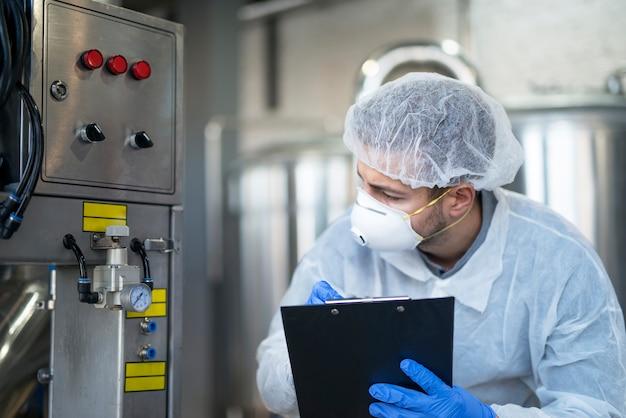
Here's an overview of the key safety technologies and innovations revolutionizing pharma manufacturing!
1) Advanced Automation & Robotics
- Automated Guided Vehicles (AGVs): AGVs are used for transporting materials within manufacturing facilities. These autonomous robots help reduce human error and physical strain on workers, enhancing overall safety. They ensure precise and timely delivery of materials, minimizing the risk of contamination and accidents.
- Robotic Process Automation (RPA): RPA is employed in various stages of production, including dispensing, packaging, and quality control. By automating repetitive and high-risk tasks, RPA reduces human intervention, thereby decreasing the likelihood of errors and accidents.
2) Real-Time Monitoring & Control Systems
- Distributed Control Systems (DCS): DCS are integrated systems used to monitor and control manufacturing processes in real-time. These systems collect data from various sensors and instruments, providing operators with a comprehensive view of the production process. This real-time monitoring enables quick identification and rectification of anomalies, preventing potential safety incidents.
- Supervisory Control & Data Acquisition (SCADA): SCADA systems are used for remote monitoring and control of industrial processes. In pharma manufacturing, SCADA helps in monitoring critical parameters such as temperature, pressure, and humidity. This ensures that production conditions remain within specified limits, safeguarding both product quality and worker safety.
3) Internet of Things (IoT) & Big Data Analytics
- IoT-Enabled Devices: IoT devices, embedded with sensors and connectivity features, provide continuous monitoring of equipment and environmental conditions. These devices facilitate predictive maintenance, alerting operators to potential equipment failures before they occur, thus preventing accidents and downtime.
- Big Data Analytics: The vast amounts of data generated by IoT devices and other monitoring systems are analyzed using big data analytics. This analysis helps identify patterns and trends that can inform safety improvements and process optimizations, leading to safer and more efficient manufacturing practices.
4) Advanced Personal Protective Equipment (PPE)
- Smart PPE: Innovations in PPE have led to the development of smart gear that includes sensors and connectivity features. Smart helmets, gloves, and suits can monitor vital signs, environmental conditions, and exposure to hazardous substances. They provide real-time feedback to workers and safety managers, enhancing on-site safety.
- Ergonomic Designs: Modern PPE is designed with ergonomics in mind, ensuring comfort and reducing fatigue for workers. This not only improves compliance with safety protocols but also minimizes the risk of musculoskeletal injuries.
5) Process Analytical Technology (PAT)
PAT is a framework for designing, analyzing, and controlling pharmaceutical manufacturing processes through timely measurements of critical quality and performance attributes. This technology enables:
- Real-Time Quality Assurance: By integrating analytical instruments directly into the production line, PAT allows for real-time monitoring of product quality. This ensures immediate detection and correction of deviations, preventing the production of defective products.
- Enhanced Process Understanding: PAT provides deeper insights into the manufacturing process, enabling better control and optimization. This understanding helps in designing safer and more efficient processes, reducing the risk of accidents.
6) Artificial Intelligence (AI) and Machine Learning (ML)
- Predictive Maintenance: AI and ML algorithms analyze historical and real-time data to predict equipment failures before they occur. This proactive approach to maintenance helps prevent unexpected breakdowns and accidents, ensuring a safer working environment.
- Quality Control: AI-powered systems can analyze data from various stages of production to identify defects and inconsistencies. These systems enhance the accuracy and efficiency of quality control processes, ensuring that only safe and effective products reach the market.
7) Blockchain Technology
- Supply Chain Transparency: Blockchain provides a secure and transparent way to track and verify every step of the pharmaceutical supply chain. This technology helps prevent counterfeiting and ensures that products are handled and stored under appropriate conditions, maintaining their safety and efficacy.
- Regulatory Compliance: Blockchain can facilitate compliance with regulatory requirements by providing an immutable record of manufacturing processes and quality control measures. This transparency helps in ensuring that all safety protocols are followed meticulously.
Ensuring Safety in Pharma Manufacturing: Key Lessons and Practical Advice
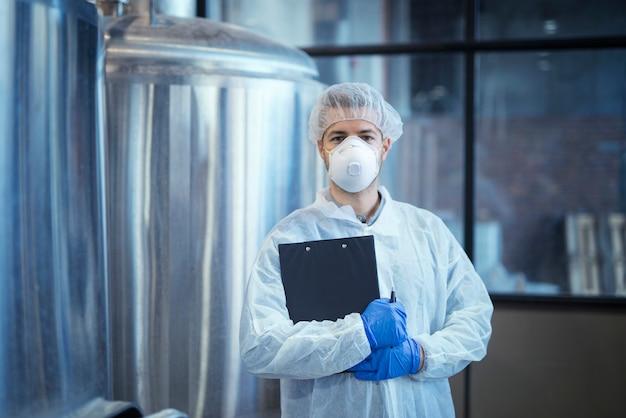
The pharmaceutical manufacturing industry is highly regulated, with safety as a top priority. Protecting workers, ensuring product integrity, and meeting strict compliance standards are essential. Here are the key lessons and practical tips to improve safety in pharma manufacturing!
1) Prioritize Safety Culture
Lesson Learned: Safety culture begins at the top and permeates every level of the organization. A culture that prioritizes safety fosters employee engagement, promotes accountability, and empowers individuals to identify and address safety concerns proactively.
Practical Advice:
- Establish clear safety policies and procedures, and communicate them effectively to all employees.
- Provide regular safety training and empower employees to voice safety concerns without fear of reprisal.
- Recognize and reward safety-conscious behaviour to reinforce the importance of safety within the organization.
2) Embrace Risk Assessment & Management
Lesson Learned: Identifying and mitigating risks is essential for preventing accidents and ensuring the quality of pharmaceutical products. A comprehensive risk assessment process helps identify potential hazards and implement appropriate controls to manage those risks effectively.
Practical Advice:
- Conduct thorough hazard analysis, including process hazard analysis (PHA) and failure modes and effects analysis (FMEA), to identify potential risks.
- Prioritize risks based on severity and likelihood, focusing resources on those with the highest potential impact.
- Implement safety measures such as engineering controls, administrative controls, and personal protective equipment (PPE) to mitigate identified risks.
3) Invest In Training And Education
Lesson Learned: Well-trained employees are better equipped to identify hazards, follow safety protocols, and respond effectively to emergencies. Investing in training and education not only enhances safety but also contributes to a more skilled and competent workforce.
Practical Advice:
- Provide comprehensive training on safety procedures, including handling of hazardous materials, emergency response protocols, and proper use of equipment.
- Offer specialized training for roles involving high-risk tasks, such as operating complex machinery or handling potent compounds.
- Encourage ongoing learning and professional development to keep employees informed about the latest safety practices and technologies
4) Implement Robust Process Safety Management Systems
Lesson Learned: Process safety management (PSM) systems are critical for preventing catastrophic incidents such as fires, explosions, and chemical releases. Implementing robust PSM systems ensures that manufacturing processes are designed, operated, and maintained in a safe and reliable manner.
Practical Advice:
- Establish clear procedures for managing change, including modifications to equipment, processes, or operating conditions.
- Conduct regular inspections and audits to identify potential safety hazards and ensure compliance with regulatory requirements.
- Continuously monitor process parameters and implement preventive maintenance programs to address equipment failures and malfunctions proactively.
5) Foster Collaboration & Knowledge Sharing
Lesson Learned: Collaboration between different departments, as well as with external stakeholders such as regulatory agencies and industry associations, is essential for promoting safety in pharma manufacturing. Sharing best practices, lessons learned, and industry trends helps drive continuous improvement and innovation.
Practical Advice:
- Encourage cross-functional collaboration between safety, quality, engineering, and operations teams to identify and address safety issues holistically.
- Participate in industry forums, conferences, and working groups to stay informed about emerging safety trends and regulatory updates.
- Foster a culture of knowledge sharing within the organization, encouraging employees to share their experiences, insights, and lessons learned with their colleagues.
6) Robotics For Hazardous Processes
Lesson Learned: Integrating robotics into pharmaceutical manufacturing helps eliminate direct human involvement in high-risk tasks such as chemical handling, sterile compounding, and high-temperature processes. This significantly reduces workplace injuries and enhances operational consistency.
Practical Advice:
- Identify high-risk areas in your manufacturing processes where robotics can safely replace manual labor.
- Train staff to work alongside robotic systems, focusing on safety protocols and emergency procedures.
- Continuously evaluate and optimize robotic systems to improve efficiency and safety outcomes.
7) IoT-Enabled Safety Monitoring
Lesson Learned: Real-time safety monitoring through IoT devices provides continuous oversight of environmental and equipment conditions. Early detection of anomalies like temperature shifts or gas leaks helps prevent accidents and ensures regulatory compliance.
Practical Advice:
- Deploy IoT sensors across critical areas to monitor parameters like air quality, humidity, vibration, and pressure.
- Integrate sensor data with a centralized dashboard for real-time alerts and historical analysis.
- Regularly maintain and calibrate IoT devices to ensure data accuracy and system reliability.
8) Regulatory Focus On Safety
Lesson Learned: Regulatory agencies are increasingly prioritizing workplace safety, making it essential for pharma companies to go beyond compliance and proactively strengthen their safety frameworks. Staying aligned with evolving regulations ensures smoother audits and protects brand reputation.
Practical Advice:
- Stay updated with global and local regulatory changes through industry newsletters and forums.
- Involve regulatory affairs teams early in the development of safety protocols and risk mitigation plans.
- Conduct regular internal audits and mock inspections to identify gaps and prepare for official assessments.
Conclusion
Safety in pharma manufacturing is crucial, going beyond legal compliance to a moral duty for worker and consumer protection. Emphasizing safety culture, risk management, training, process safety systems, and collaboration ensures workplace safety, product quality, and regulatory adherence. As the industry evolves, staying updated with safety practices is vital. Pharma Now provides comprehensive insights into the latest safety technologies and expert advice, proving essential for professionals committed to safety excellence in pharma manufacturing.
FAQs
1. Why Is Safety Important In Pharmaceutical Manufacturing?
Safety in pharmaceutical manufacturing is crucial for protecting the well-being of workers, maintaining the integrity of processes, and ensuring the quality of products. It is also a legal requirement and fundamental to upholding public health and the industry's reputation.
2. What Is Process Safety And Why Is It Important?
Process safety focuses on preventing incidents that could disrupt manufacturing operations and compromise product safety. It is essential to identify and control risks associated with manufacturing processes to prevent accidents and ensure the safe and reliable production of pharmaceutical products.
3. How Do Safety Innovations Contribute To Sustainability In Pharmaceutical Manufacturing?
Safety innovations in pharmaceutical manufacturing not only improve worker safety and product quality but also support sustainability. Green chemistry enables safer, eco-friendly processes, while predictive analytics helps reduce waste and optimize resources for more sustainable operations.
4) How Is Pharma Manufacturing Safety Evolving?
Pharma manufacturing safety is improving with the use of advanced technology, better quality control systems, automation, and strict regulatory guidelines. Companies are focusing more on preventing errors and protecting both workers and patients.
5) What Are Some Examples Of Smart Safety Innovations?
Smart safety innovations in pharma include real-time monitoring of equipment and environments, automation to reduce human error, AI-driven quality checks, wearables for worker safety, and digital records that improve traceability and speed up audits.




